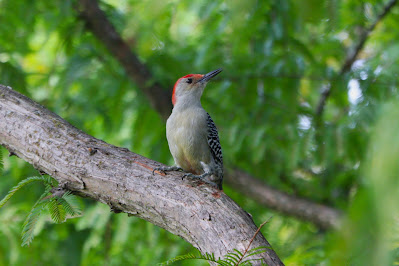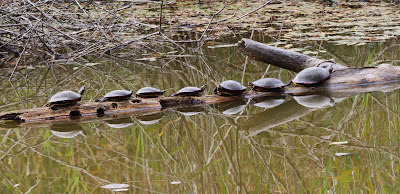Canatara Findings in October:
Praying Mantis' have been plentiful in Canatara Park this fall. This individual is waiting with outstretched "arms" for a meal to come by.
I watched a Praying Mantis eat a Honey Bee on Sweet White Clover. It wasn't until I looked at the pictures on my computer that I noticed a tiny fly in several shots. (underside of head) I later learned that Kleptoparastic Flies will swarm around a mantis with prey. Its good to learn something new every day!!
Red-bellied Woodpecker, male, in Dawn Redwood Tree (as suggested by iNaturalist). It is a deciduous coniferous tree, meaning it grows cones, but loses it's needles each year and is native to China. Canatara has a number of non-native species that were planted in years gone by. There is currently more focus on planting native trees in the park.
https://www.inaturalist.org/taxa/69152-Metasequoia
Shiny Blue Bottle Flies, mating on October 24th.
The sunnier, warmer days have allowed turtles to bask in the sun which helps them to digest food more quickly. Gaining body fat increases their survival rate while spending time in the mud at the bottom of the water through the long winter. The technical term for turtle hibernation is "Brumation". Their metabolism slows down and they stop eating, but they aren't actually sleeping.
https://www.caringpets.org/how-to-take-care-of-a-turtle/hibernation-brumation-estivation/
Asian Ladybird Beetle on Wild Bergamot seed head.























































